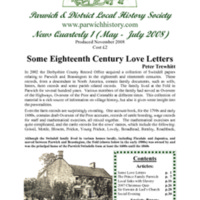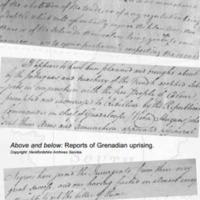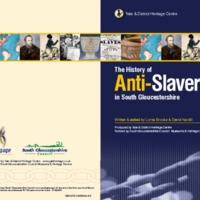
Parwich 2007 Slavery Season
To commemorate the bicentenary of the Abolition Act, Parwich Church and the Local History Society organised a short series of events. A talk by Alasdair Duncan, 'Operation Reflex', looked at how small rural communities can help combat modern slavery. A talk by Peter Trewhitt explored local involvement links to slavery from pre-historic times through the high reliance on slave work forces in Roman and Saxon times to the influx of wealth from the exploitation of African slaves on Caribbean plantations.

Unfair Trade
A touring exhibition from Herefordshire Museums, which explored Herefordshire's hidden history of slavery. Local connections include Moccas Court near Hereford, the country house once home to the Cornewall family, owners of a sugar plantation on Grenada at the time of the Grenadian uprising of 1795. Another county connection to the history of slavery is Lady Hawkins' School in Kington, the construction of which was bequeathed in 1632 by the widow of Sir John Hawkins, England's first slave trader. The nineteenth-century poet and abolitionist Elizabeth Barrett Browning also had family connections in Herefordshire. The exhibition was taken on tour around Herefordshire and Warwickshire on a specially commissioned Abolition Bus.

Impact: A history of anti-slavery in South Gloucestershire
This exhibition and booklet were produced as part of South Gloucestershire's Engage 2007 project, in partnership with Yate and District Heritage Centre. Both the exhibition and booklet explored local connections with the history of slavery and anti-slavery in South Gloucestershire. Links identified included the career of Robert Jenkinson of Hawkesbury (later Prime Minister Lord Liverpool), the Caribbean plantations of the Codrington family, the campaign efforts of abolitionist Joseph Sturge and, looking further back in history, St Wulfstan's attempts to abolish the trade in slaves to Ireland in the 11th century. The booklet was written and edited by Lorna Brooks and David Hardill. The exhibition toured the local area, including Thornbury and District Museum, pictured here.